Renato A. Krohling
Skin cancer diagnosis using NIR spectroscopy data of skin lesions in vivo using machine learning algorithms
Jan 02, 2024Abstract:Skin lesions are classified in benign or malignant. Among the malignant, melanoma is a very aggressive cancer and the major cause of deaths. So, early diagnosis of skin cancer is very desired. In the last few years, there is a growing interest in computer aided diagnostic (CAD) using most image and clinical data of the lesion. These sources of information present limitations due to their inability to provide information of the molecular structure of the lesion. NIR spectroscopy may provide an alternative source of information to automated CAD of skin lesions. The most commonly used techniques and classification algorithms used in spectroscopy are Principal Component Analysis (PCA), Partial Least Squares - Discriminant Analysis (PLS-DA), and Support Vector Machines (SVM). Nonetheless, there is a growing interest in applying the modern techniques of machine and deep learning (MDL) to spectroscopy. One of the main limitations to apply MDL to spectroscopy is the lack of public datasets. Since there is no public dataset of NIR spectral data to skin lesions, as far as we know, an effort has been made and a new dataset named NIR-SC-UFES, has been collected, annotated and analyzed generating the gold-standard for classification of NIR spectral data to skin cancer. Next, the machine learning algorithms XGBoost, CatBoost, LightGBM, 1D-convolutional neural network (1D-CNN) were investigated to classify cancer and non-cancer skin lesions. Experimental results indicate the best performance obtained by LightGBM with pre-processing using standard normal variate (SNV), feature extraction providing values of 0.839 for balanced accuracy, 0.851 for recall, 0.852 for precision, and 0.850 for F-score. The obtained results indicate the first steps in CAD of skin lesions aiming the automated triage of patients with skin lesions in vivo using NIR spectral data.
Bayesian artificial brain with ChatGPT
Aug 28, 2023Abstract:This paper aims to investigate the mathematical problem-solving capabilities of Chat Generative Pre-Trained Transformer (ChatGPT) in case of Bayesian reasoning. The study draws inspiration from Zhu & Gigerenzer's research in 2006, which posed the question: Can children reason the Bayesian way? In the pursuit of answering this question, a set of 10 Bayesian reasoning problems were presented. The results of their work revealed that children's ability to reason effectively using Bayesian principles is contingent upon a well-structured information representation. In this paper, we present the same set of 10 Bayesian reasoning problems to ChatGPT. Remarkably, the results demonstrate that ChatGPT provides the right solutions to all problems.
Development of a hybrid method for stock trading based on TOPSIS, EMD and ELM
Jun 14, 2022
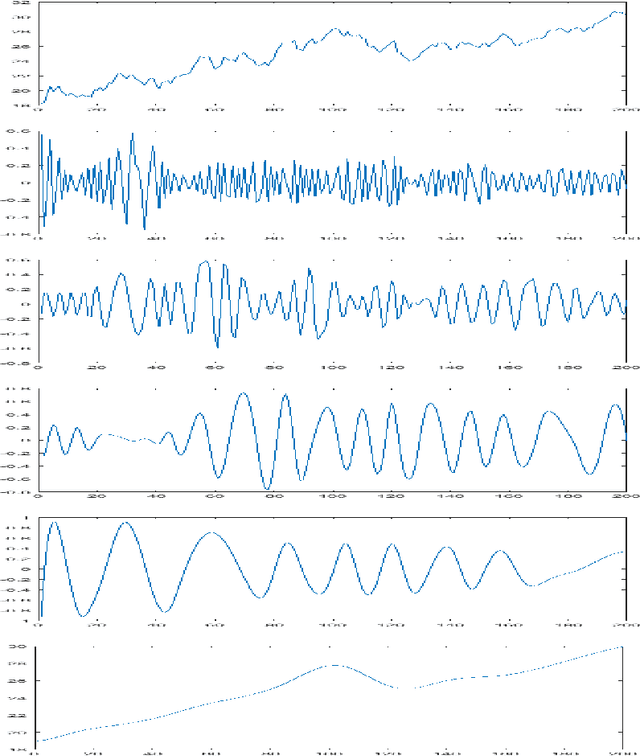
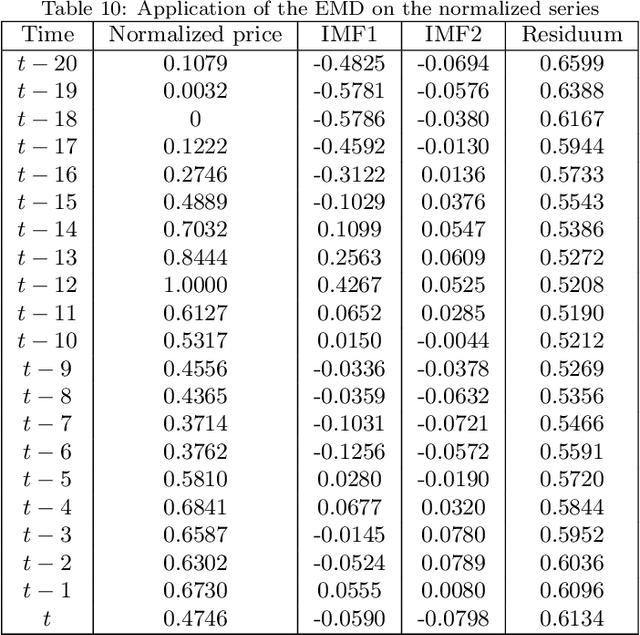
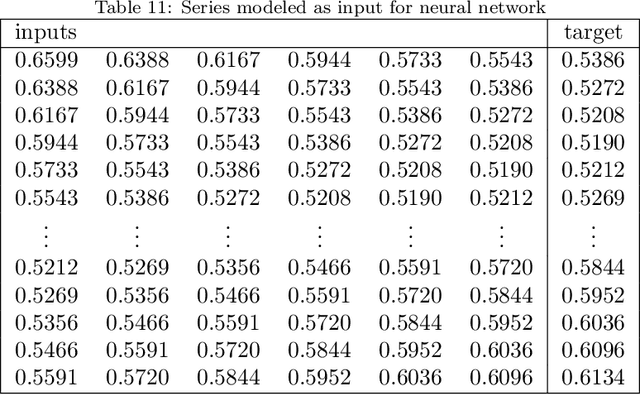
Abstract:Deciding when to buy or sell a stock is not an easy task because the market is hard to predict, being influenced by political and economic factors. Thus, methodologies based on computational intelligence have been applied to this challenging problem. In this work, every day the stocks are ranked by technique for order preference by similarity to ideal solution (TOPSIS) using technical analysis criteria, and the most suitable stock is selected for purchase. Even so, it may occur that the market is not favorable to purchase on certain days, or even, the TOPSIS make an incorrect selection. To improve the selection, another method should be used. So, a hybrid model composed of empirical mode decomposition (EMD) and extreme learning machine (ELM) is proposed. The EMD decomposes the series into several sub-series, and thus the main omponent (trend) is extracted. This component is processed by the ELM, which performs the prediction of the next element of component. If the value predicted by the ELM is greater than the last value, then the purchase of the stock is confirmed. The method was applied in a universe of 50 stocks in the Brazilian market. The selection made by TOPSIS showed promising results when compared to the random selection and the return generated by the Bovespa index. Confirmation with the EMD-ELM hybrid model was able to increase the percentage of profit tradings.
Exploring Advances in Transformers and CNN for Skin Lesion Diagnosis on Small Datasets
May 30, 2022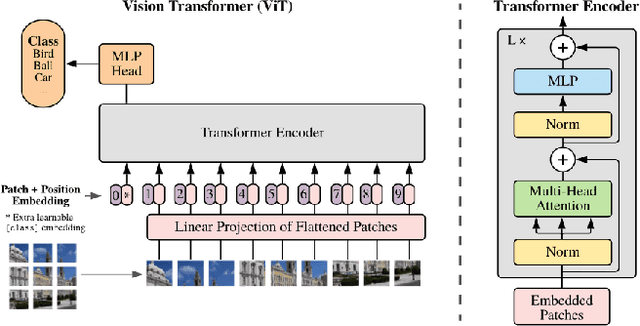
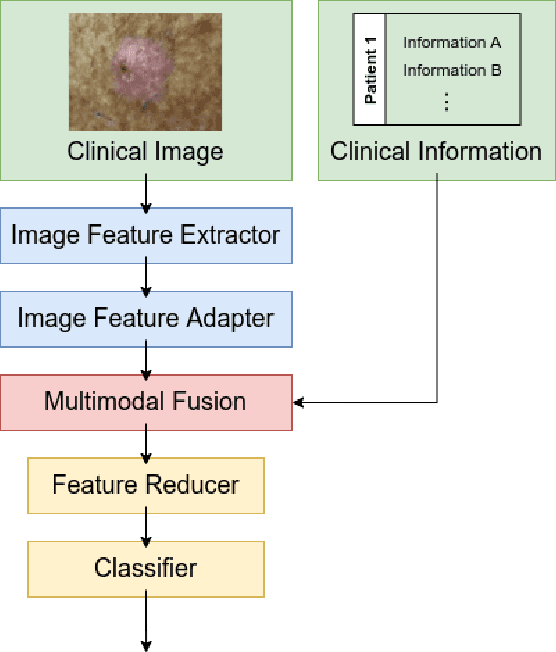
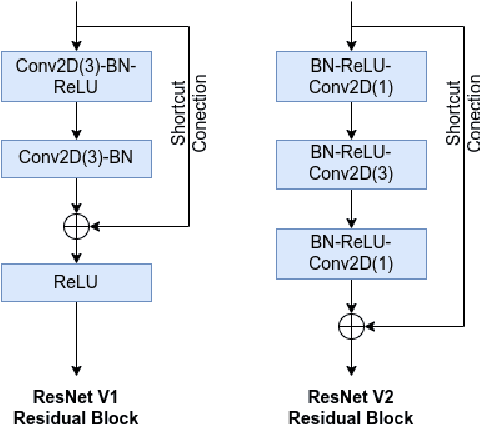
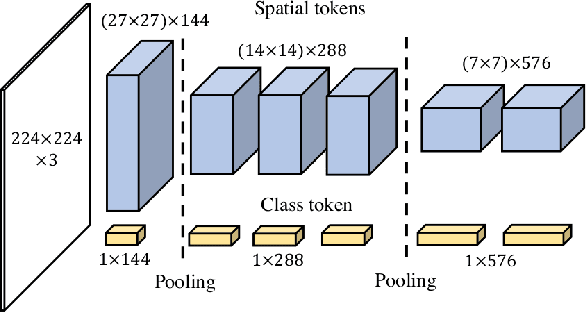
Abstract:Skin cancer is one of the most common types of cancer in the world. Different computer-aided diagnosis systems have been proposed to tackle skin lesion diagnosis, most of them based in deep convolutional neural networks. However, recent advances in computer vision achieved state-of-art results in many tasks, notably Transformer-based networks. We explore and evaluate advances in computer vision architectures, training methods and multimodal feature fusion for skin lesion diagnosis task. Experiments show that PiT ($0.800 \pm 0.006$), CoaT ($0.780 \pm 0.024$) and ViT ($0.771 \pm 0.018$) backbone models with MetaBlock fusion achieved state-of-art results for balanced accuracy metric in PAD-UFES-20 dataset.
Solving integer multi-objective optimization problems using TOPSIS, Differential Evolution and Tabu Search
Apr 05, 2022



Abstract:This paper presents a method to solve non-linear integer multiobjective optimization problems. First the problem is formulated using the Technique for Order Preference by Similarity to Ideal Solution (TOPSIS). Next, the Differential Evolution (DE) algorithm in its three versions (standard DE, DE best and DEGL) are used as optimizer. Since the solutions found by the DE algorithms are continuous, the Tabu Search (TS) algorithm is employed to find integer solutions during the optimization process. Experimental results show the effectiveness of the proposed method.
Beyond Visual Image: Automated Diagnosis of Pigmented Skin Lesions Combining Clinical Image Features with Patient Data
Jan 25, 2022Abstract:kin cancer is considered one of the most common type of cancer in several countries. Due to the difficulty and subjectivity in the clinical diagnosis of skin lesions, Computer-Aided Diagnosis systems are being developed for assist experts to perform more reliable diagnosis. The clinical analysis and diagnosis of skin lesions relies not only on the visual information but also on the context information provided by the patient. This work addresses the problem of pigmented skin lesions detection from smartphones captured images. In addition to the features extracted from images, patient context information was collected to provide a more accurate diagnosis. The experiments showed that the combination of visual features with context information improved final results. Experimental results are very promising and comparable to experts.
A Smartphone based Application for Skin Cancer Classification Using Deep Learning with Clinical Images and Lesion Information
Apr 28, 2021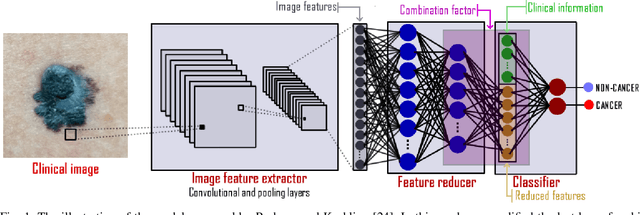
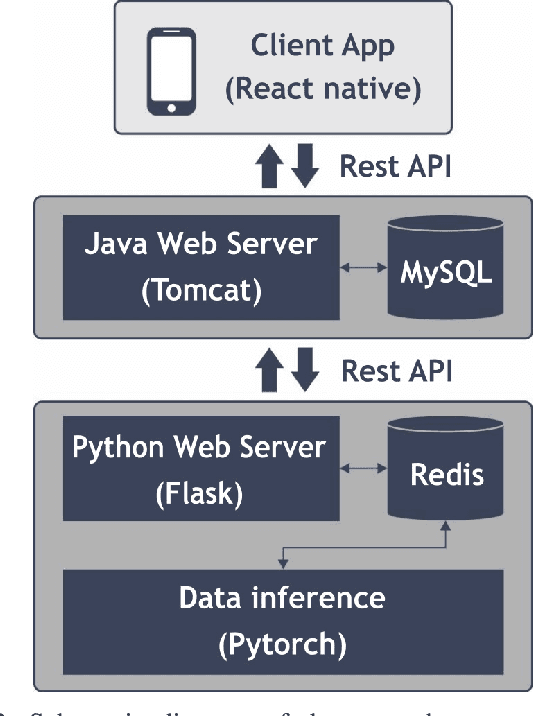
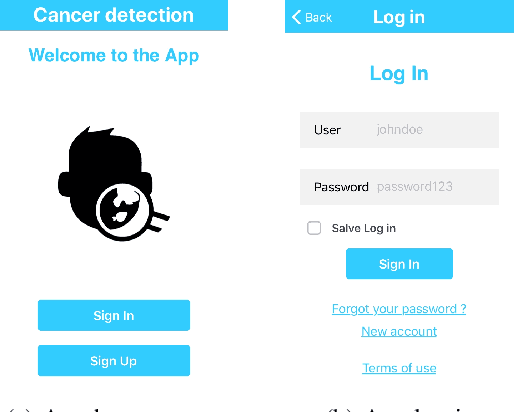
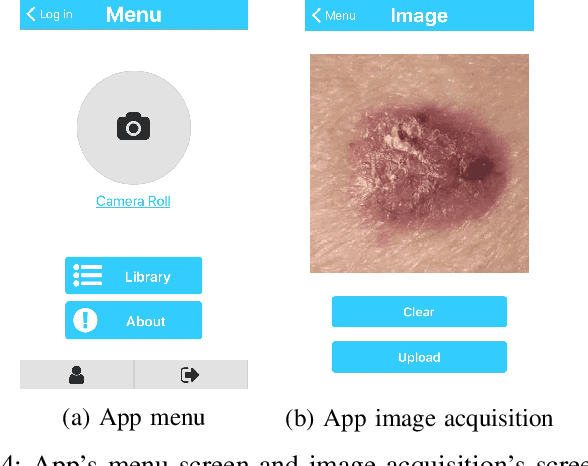
Abstract:Over the last decades, the incidence of skin cancer, melanoma and non-melanoma, has increased at a continuous rate. In particular for melanoma, the deadliest type of skin cancer, early detection is important to increase patient prognosis. Recently, deep neural networks (DNNs) have become viable to deal with skin cancer detection. In this work, we present a smartphone-based application to assist on skin cancer detection. This application is based on a Convolutional Neural Network(CNN) trained on clinical images and patients demographics, both collected from smartphones. Also, as skin cancer datasets are imbalanced, we present an approach, based on the mutation operator of Differential Evolution (DE) algorithm, to balance data. In this sense, beyond provides a flexible tool to assist doctors on skin cancer screening phase, the method obtains promising results with a balanced accuracy of 85% and a recall of 96%.
Discovering an Aid Policy to Minimize Student Evasion Using Offline Reinforcement Learning
Apr 20, 2021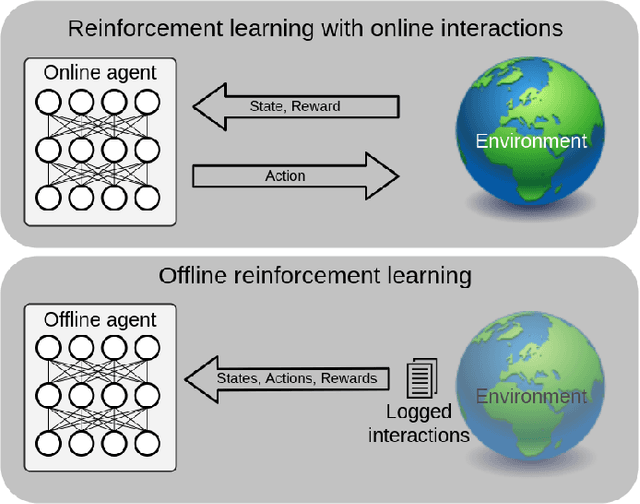
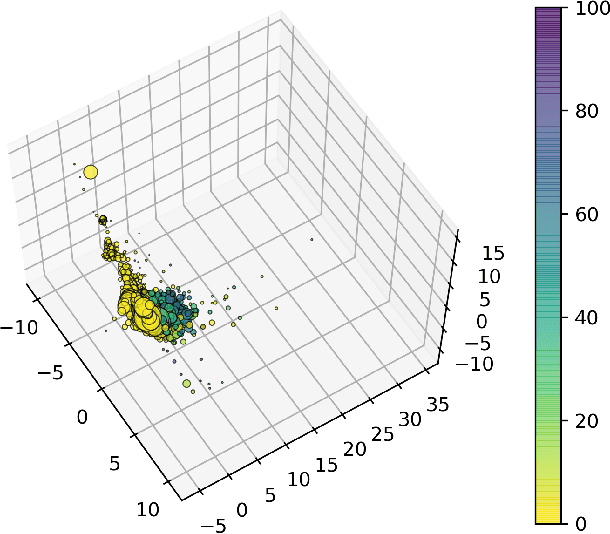
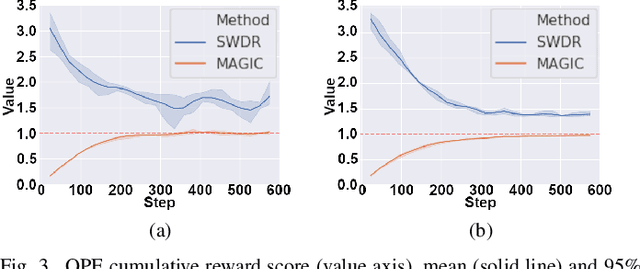
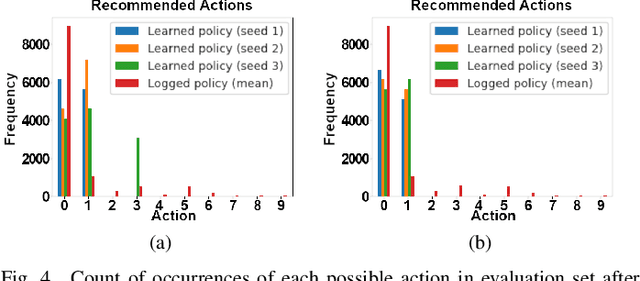
Abstract:High dropout rates in tertiary education expose a lack of efficiency that causes frustration of expectations and financial waste. Predicting students at risk is not enough to avoid student dropout. Usually, an appropriate aid action must be discovered and applied in the proper time for each student. To tackle this sequential decision-making problem, we propose a decision support method to the selection of aid actions for students using offline reinforcement learning to support decision-makers effectively avoid student dropout. Additionally, a discretization of student's state space applying two different clustering methods is evaluated. Our experiments using logged data of real students shows, through off-policy evaluation, that the method should achieve roughly 1.0 to 1.5 times as much cumulative reward as the logged policy. So, it is feasible to help decision-makers apply appropriate aid actions and, possibly, reduce student dropout.
Recent advances in deep learning applied to skin cancer detection
Dec 06, 2019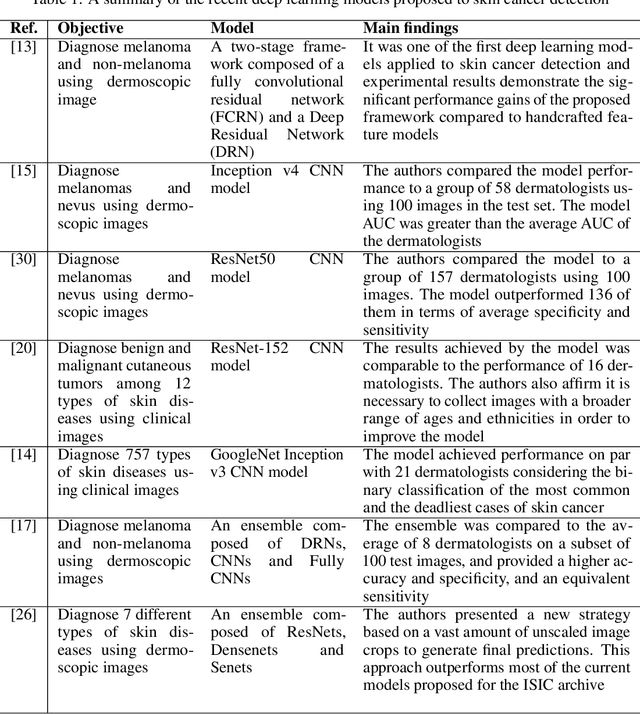
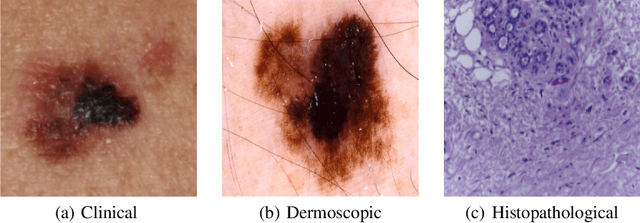
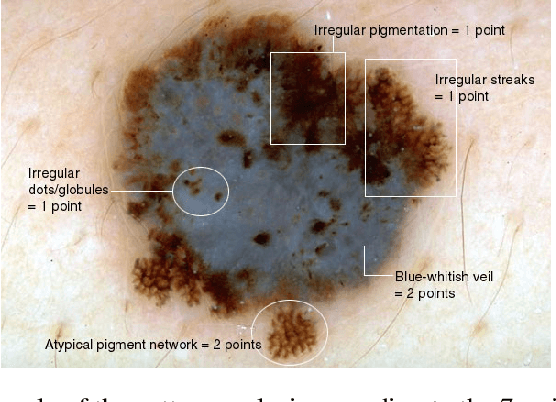
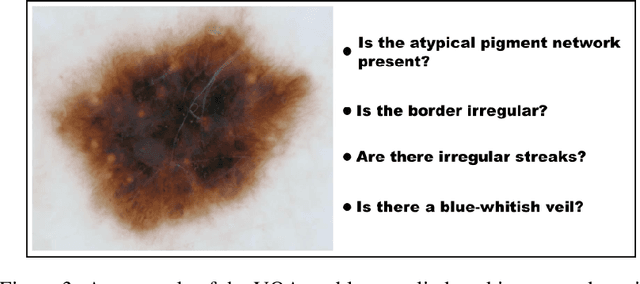
Abstract:Skin cancer is a major public health problem around the world. Its early detection is very important to increase patient prognostics. However, the lack of qualified professionals and medical instruments are significant issues in this field. In this context, over the past few years, deep learning models applied to automated skin cancer detection have become a trend. In this paper, we present an overview of the recent advances reported in this field as well as a discussion about the challenges and opportunities for improvement in the current models. In addition, we also present some important aspects regarding the use of these models in smartphones and indicate future directions we believe the field will take.
The impact of patient clinical information on automated skin cancer detection
Sep 16, 2019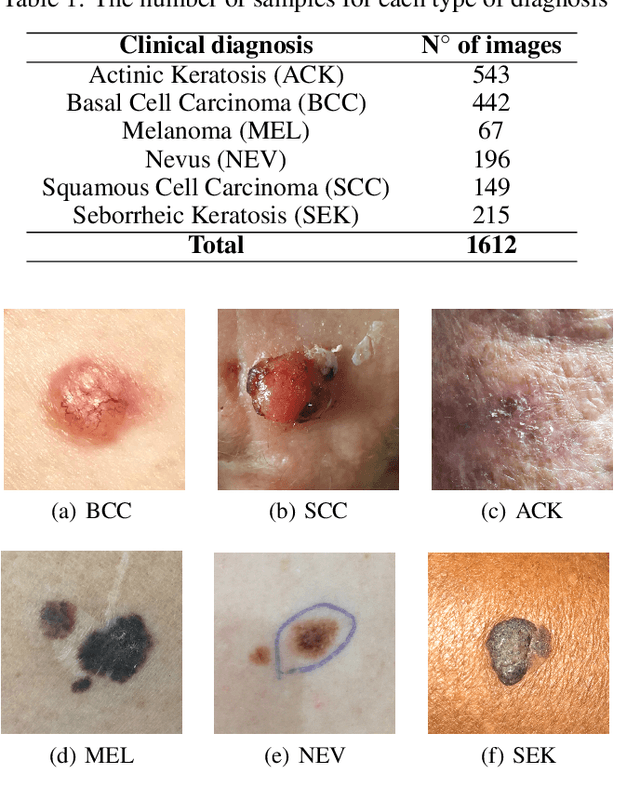
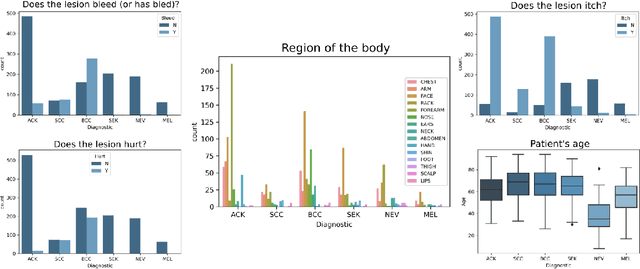

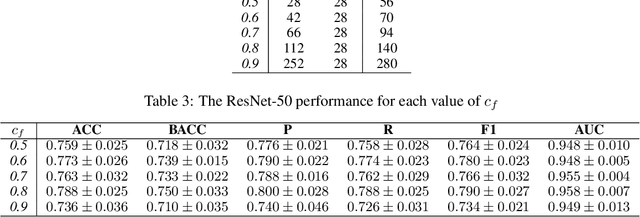
Abstract:Skin cancer is one of the most common types of cancer around the world. For this reason, over the past years, different approaches have been proposed to assist detect it. Nonetheless, most of them are based only on dermoscopy images and do not take into account the patient clinical information. In this work, first, we present a new dataset that contains clinical images, acquired from smartphones, and patient clinical information of the skin lesions. Next, we introduce a straightforward approach to combine the clinical data and the images using different well-known deep learning models. These models are applied to the presented dataset using only the images and combining them with the patient clinical information. We present a comprehensive study to show the impact of the clinical data on the final predictions. The results obtained by combining both sets of information show a general improvement of around 7% in the balanced accuracy for all models. In addition, the statistical test indicates significant differences between the models with and without considering both data. The improvement achieved shows the potential of using patient clinical information in skin cancer detection and indicates that this piece of information is important to leverage skin cancer detection systems.
 Add to Chrome
Add to Chrome Add to Firefox
Add to Firefox Add to Edge
Add to Edge